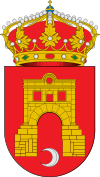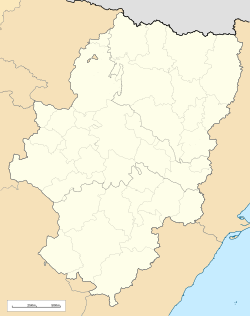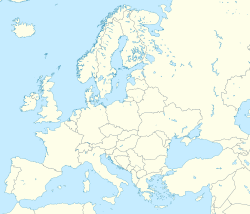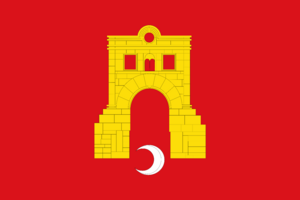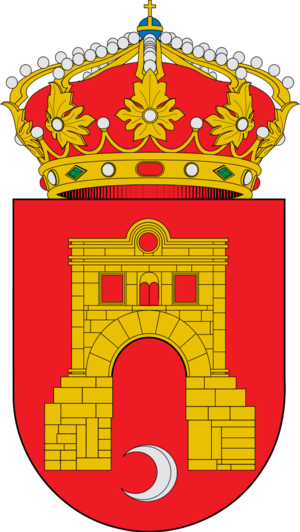Gotor facts for kids
Quick facts for kids
Gotor
|
|||
|---|---|---|---|
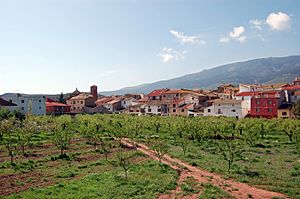
View of Gotor with the Sierra de la Virgen
in the background |
|||
|
|||
| Country | |||
| Autonomous community | |||
| Province | Zaragoza | ||
| Comarca | Aranda | ||
| Area | |||
| • Total | 15 km2 (6 sq mi) | ||
| Population
(2018)
|
|||
| • Total | 306 | ||
| • Density | 20.4/km2 (52.8/sq mi) | ||
| (INE) | |||
| Demonym(s) | Gotorino, Gotorina | ||
| Time zone | UTC+1 (CET) | ||
| • Summer (DST) | UTC+2 (CEST) | ||
Gotor is a small town, also known as a municipality, located in Spain. It is found in the Aranda Comarca, which is a region within the province of Zaragoza. This province is part of Aragon, one of Spain's autonomous communities. In 2018, about 306 people lived in Gotor.
Contents
Where is Gotor?
Gotor is in the northeastern part of Spain. It belongs to the Aragon region, which is known for its beautiful landscapes and history. The town is specifically located in the province of Zaragoza. This province is named after its capital city, Zaragoza, which is a much larger city.
The Aranda Comarca
Gotor is part of the Aranda Comarca. A "comarca" is like a local district or area in Spain. The Aranda Comarca is known for its natural beauty, including mountains and valleys. The town of Gotor is nestled in this area.
What is Gotor like?
Gotor is a quiet municipality. It covers an area of about 15 square kilometers. The people who live in Gotor are called "Gotorino" (for males) or "Gotorina" (for females).

Local Symbols
Like many towns, Gotor has its own symbols. It has a special flag and a coat of arms (a shield with symbols). These symbols represent the history and identity of the town and its people.
Population and Life
The population of Gotor is quite small. In 2018, there were 306 residents. This makes Gotor a close-knit community where people likely know each other well. Small towns often have a peaceful way of life, with strong local traditions.
See also
- In Spanish: Gotor para niños



